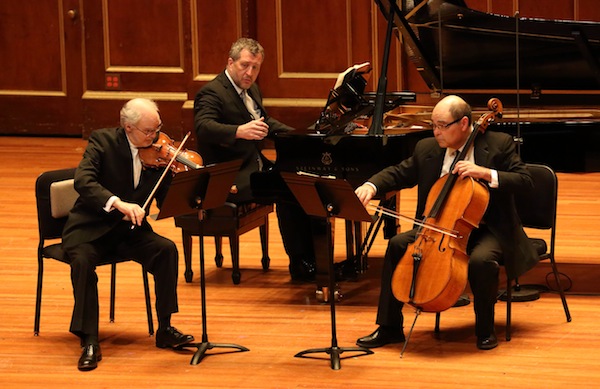Musical Workers

Few workers have it worse than those in the classical music industry. At the best of times, there’s not much money. Even though they have good unions, they just don’t have a lot of bargaining power. And to say the least, an era when you can’t have concerts means this is not the best of times. It’s grim indeed:
As the months without a paycheck wore on, Joel Noyes, a 41-year-old cellist with the Metropolitan Opera, realized that in order to keep making his mortgage payments he would have to sell one of his most valuable possessions: his 19th-century Russian bow. He reluctantly switched back to the inferior one he had used as a child.
“It’s kind of like if you were a racecar driver and you drove Ferraris on the Formula One circuit,” Mr. Noyes said, “and suddenly you had to get on the track in a Toyota Camry.”
The Metropolitan Opera House has been dark for a year, and its musicians have gone unpaid for almost as long. The players in one of the finest orchestras in the world suddenly found themselves relying on unemployment benefits, scrambling for virtual teaching gigs, selling the tools of their trade and looking for cheaper housing. About 40 percent left the New York area. More than a tenth retired.
After the musicians had been furloughed for months, the Met offered them reduced pay in the short term if they agreed to long-term cuts that the company, which estimates that it has lost $150 million in earned revenues, says it will need to survive. When the musicians resisted, the Met offered to begin temporarily paying them up to $1,534 a week — less than half their old pay, but something — if they simply returned to the bargaining table, a proposal the musicians are weighing.
…
The Met, which was financially fragile even before the virus, was forced to shut its doors on March 12, 2020, and it furloughed most of its workers, including those in its orchestra and chorus, in April. (It continued to pay for their health coverage.) In the fall, the Met presented an offer to its employees: it would resume partial payments in exchange for significant long-term pay cuts and concessions. The unions resisted. By the end of the year the Met orchestra was the only major ensemble without a deal to receive pandemic pay, according to the International Conference of Symphony and Opera Musicians.
Then, in December, the company locked out its roughly 300 stagehands after their union, Local One of the International Alliance of Theatrical Stage Employees, rejected the Met’s proposed pay cuts. (In a letter to the union last year, Peter Gelb, the Met’s general manager, wrote that the average full-time stagehand cost the Met $260,000 in 2019, including benefits; the union disputes that number, saying that when the steady extra stage hands who work at the Met regularly, and sometimes full-time, are factored in, the average pay is far lower.)
Mr. Gelb said that the company had no choice but to seek cuts when the pandemic left it in a perilous financial situation.
Before you say this is actually a lot of money, note that a) these are some of the very finest musicians in the entire world and b) they have to live in New York. I’m sure some have teaching side gigs, but that’s not going to cover the difference. Now consider that musicians in smaller cities who made far less to begin with are also not getting paid. What you have is another industry–such as journalism and academia–that is in collapse.
One of the best parts of the New Deal is that the Roosevelt administration took the plight of poor artists and musicians and writers seriously and put them to work with direct employment programs that used their skills. Was some of it “make work”? You bet it was. Is there any problem with that? No. We should think about new government programs that employ artists once again. There’s all sorts of things these people could do that would be useful to society at large, from paying them to make recordings of classic American song to school programs to all sorts of things I am not even thinking of right now.


